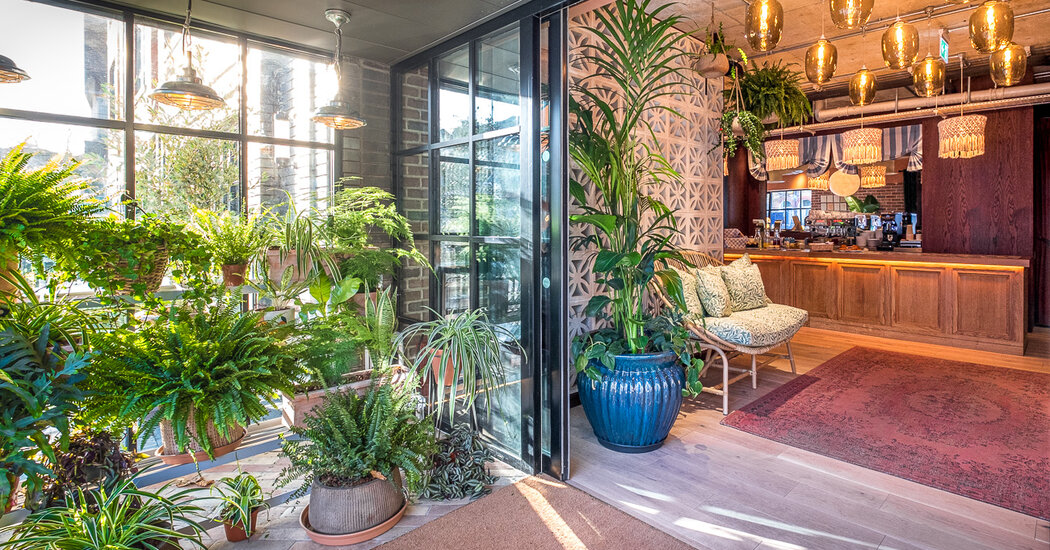
‘Whole life net zero’
When the brothers and developers Robert and Stuart Godwin set out to build room2 Chiswick, an 86-room hotel in London that opened in December 2021, they knew they wanted to operate on a net-zero emissions basis, but decided to expand on the concept and account for its construction and eventual demolition in what is known as “whole life net zero.”
“Ultimately, we’ve said we need to take full accountability for our entire carbon footprint from our entire existence, because if we don’t, and others don’t, we stand no chance of going anywhere near a net-zero future,” said Robert Godwin, the managing director of Lamington Group, the family’s development company, and co-founder of room2 Hometels, designed as hotels with residential features of a home, such as kitchens.
Where possible, the construction used recycled materials, from reclaimed terra cotta floors in the lobby to hallway carpets made from plastic fishing nets found in ocean refuse. Much of the custom-made furniture, headboards and banquettes were produced within 10 miles of the property and offset by planting more than 4,000 trees. Keeping its investments local, the developers procured wallpaper, ceramic tiles, mirrors and mosaics from area artists.
Efficient systems include geothermal heating and cooling. A “blue roof,” essentially a reservoir beneath the top floor green roof, which is home to garden beds and beehives, can hold 50,000 liters of rainwater, easing runoff and providing water for plants. Guest rooms have custom recycling bins, including a section for food to be composted.
Compared to the typical hotel in Britain, room2 Chiswick is 89 percent more energy efficient, according to its owners, who are at work on the next room2 in Belfast and plan to open more than 40 hotels in Europe and North America by 2030.
The hotel offsets the emissions it can’t eliminate and what it expects will be the cost to the environment in some 60 years when the building is potentially demolished, by investing in a bamboo farm in Nicaragua that grows the woody plants to capture carbon, then harvests selectively.




